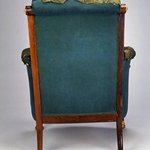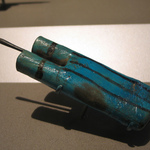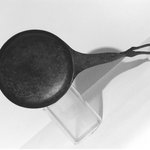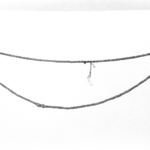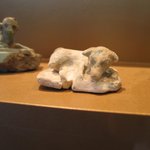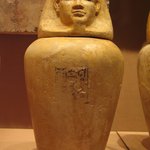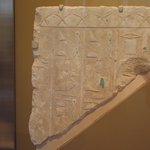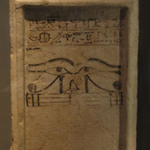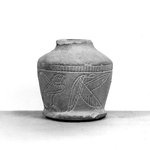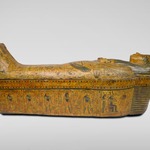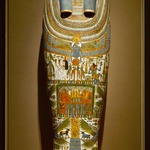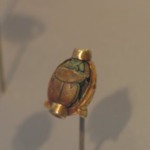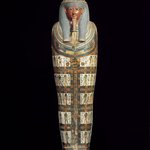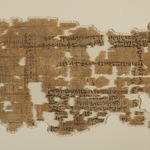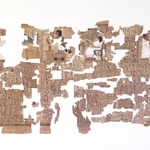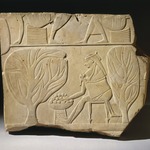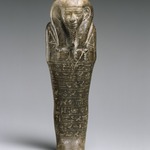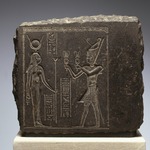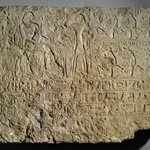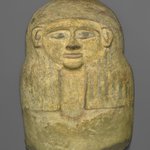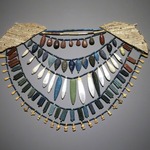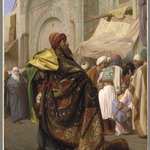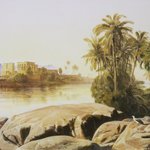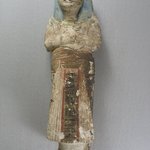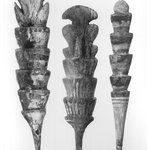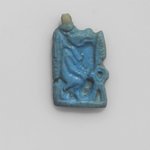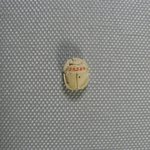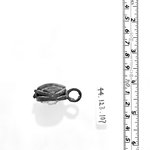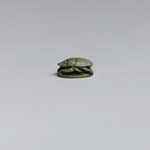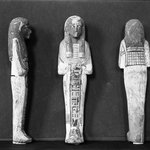

Amphora with Painted Floral Collar, ca. 1292–1075 B.C.E. Egyptian alabaster, traces of paint, 7 9/16 x 4 3/4 x diam. 3 11/16 in. (19.2 x 12 x 9.4 cm). Brooklyn Museum, Charles Edwin Wilbour Fund, 09.889.92. Creative Commons-BY (Photo: Brooklyn Museum, CUR.09.889.92_NegL1011_3_print_bw.jpg)
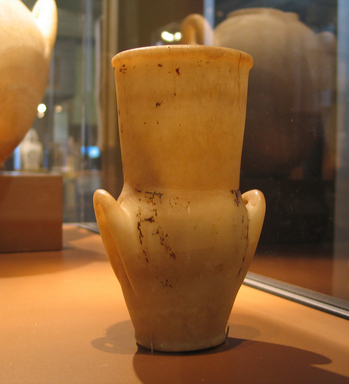
Amphora with Painted Floral Collar, ca. 1292–1075 B.C.E. Egyptian alabaster, traces of paint, 7 9/16 x 4 3/4 x diam. 3 11/16 in. (19.2 x 12 x 9.4 cm). Brooklyn Museum, Charles Edwin Wilbour Fund, 09.889.92. Creative Commons-BY (Photo: Brooklyn Museum, CUR.09.889.92_erg456.jpg)

Amphora with Painted Floral Collar, ca. 1292–1075 B.C.E. Egyptian alabaster, traces of paint, 7 9/16 x 4 3/4 x diam. 3 11/16 in. (19.2 x 12 x 9.4 cm). Brooklyn Museum, Charles Edwin Wilbour Fund, 09.889.92. Creative Commons-BY (Photo: , CUR.09.889.92_NegID_09.889.36_GRPA_print_cropped_bw.jpg)

Amphora with Painted Floral Collar, ca. 1292–1075 B.C.E. Egyptian alabaster, traces of paint, 7 9/16 x 4 3/4 x diam. 3 11/16 in. (19.2 x 12 x 9.4 cm). Brooklyn Museum, Charles Edwin Wilbour Fund, 09.889.92. Creative Commons-BY (Photo: , CUR.09.889.92_09.889.36_34.1299a-b_09.889.65_08.480.202_07.447.32_NegID_09.889.36_GRPA_print_bw.jpg)
Amphora with Painted Floral Collar
Egyptian, Classical, Ancient Near Eastern Art
On View: Egyptian Orientation Gallery, 3rd Floor
Because stone vessels are more durable than pottery, Egyptians often made them to be left in tombs as funerary gifts meant to last for eternity.
In the New Kingdom, most stone vessels were made of Egyptian alabaster, a soft white to yellowish-white material that geologists call calcite. Calcite was mined in the Sinai Peninsula and in the eastern desert stretching from Cairo to Luxor. Stones such as basalt, quartz crystal, obsidian, porphyry, schist, steatite, and serpentine were reserved for luxury items.
The exotic forms of foreign stone vessels appealed to New Kingdom craftsmen. Two examples seen here—the amphora with two handles and the footed dish, or tazza —were inspired by Syrian models. Also, the jar with the high cylindrical neck reproduces a Cypriot pottery type known as base-ring ware. Decoration tended to rely on traditional Egyptian patterns. For example, painted or incised floral garlands appear on many stone vessels made in the Nineteenth and Twentieth Dynasties. This design alludes to the Egyptian funerary practice of draping collars of flowers around pottery vessels.
To make a vessel, a carver first chiseled a block of stone into a general shape, then slowly rotated it on a wheel while polishing the exterior with an abrasive such as sand or emery. Finally, he hollowed out the interior using a drill with a metal or hard stone bit.

